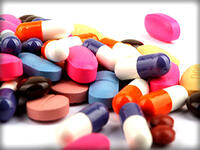Supporting Recovery for Methamphetamine Addiction.
24 Hour Crystal Meth Helpline 1-800-853-1387Who Answers?
»
- Home
- Resources
- Meth Addiction Resource Center
- Prescription Drug Facts
Meth Addiction Resource Center
-
Apr
04Prescription Drug Facts

When one hears "drugs" "drug addiction" "drug problem" or any other similar words or terms, thoughts may immediately turn toward other words and terms such as "street" "illegal" "illicit" "club" "recreational", and others in this category.
However, the word "drugs" itself can actually encompass several areas or classifications.
Prescription Drug Classifications
The classifications can generally be grouped into three categories: prescription drugs, over-the-counter drugs, and illicit or "street" drugs. A brief explanation of each follows:
- Prescription drugs are those that require written authorization from a health care professional before they can be legally obtained. The drugs are prescribed for treatment of specific conditions. Examples of prescription drugs include antibiotics, narcotic painkillers, and drugs used to treat depression or anxiety. There are, of course, others, but these are just a few.
- Over-the-counter drugs are those that require no prescription. These include cold medications, pills or liquids that are used in treating digestive upsets, vitamins, herbal supplements, and non-narcotic painkillers. It is legal to purchase these; however, because some of them can be used in the manufacture of illicit drugs, their sale is now recorded.
- Examples of illicit or "street" drugs include heroin, cocaine, methamphetamine, and "club" or "rave" drugs such as Ecstasy. It is generally illegal to purchase, use, distribute, or manufacture these drugs.
How Many Prescriptions are Written Each Year?
According to statistics taken from The Henry J. Kaiser Foundation, in 2009, there were 3,679,671,222 prescriptions written. It may be interesting to note that the population of the United States, according to the Population Reference Bureau website, was approximately 307,000,000 (three hundred seven million). This means more prescriptions were written than there are actually people in the United States.
The majority of the time, prescriptions are written for legitimate, medically necessary reasons. Additionally, almost all health care professionals are aware of the growing problem of prescription drug abuse and take care to ensure that they do not indiscriminately prescribe any type of drug, especially those that can be abused.
Prescription Drugs Most Likely to be Abused
Generally, there are three classes of prescription drugs that tend to "lend themselves" to abuse. These include drugs that contain narcotic pain relievers (most often opium derivatives), drugs that produce a sedative effect (called depressants), and drugs that can increase energy and brain function (called stimulants).
Individuals Abusing Prescription Drugs
Prescription drug abuse knows no specific age group. It is possible for anyone, no matter how young or old, to abuse prescription drugs. However, according to the National Institute of Health and the Department of Health and Human Services, the number of "new" prescription drug abusers was adolescents and young adults between the ages of 12 and 25.
Additionally, it was found that 1/3 of prescriptions written were to elderly persons (a person is generally considered elderly if over the age of 65). This number, according to the National Institute of Health, suggests that the propensity for prescription drug abuse can exist among this age group.
How can I make sure that I or any member of my family don't become a statistic? If the figures cited above concern you, you may be wondering if there is anything you can do to make sure this doesn't happen to you or your family. Fortunately, there are several ways you can help prevent prescription drug abuse. A few of them are listed below, you may think of others:
- Don't take prescription drugs, especially those containing ingredients that can lead to abuse or addiction, unless absolutely necessary. If you must take prescription drugs that do have a tendency to be abused or become addictive, start out with the lowest dosage possible, and take them exactly as prescribed.
- If you are taking narcotic painkillers, as soon as you can control your pain with non-narcotic painkillers, do so. Then, either store the remaining medication safely out of reach of children (to prevent accidental ingestion) or adolescents (who may be tempted to try them "just because they're there") until they have expired. Then, flush them down the toilet, crush them and wash the residue down the sink, or otherwise destroy the drugs.
- If you are concerned that even keeping the drugs after there are no longer for the immediate condition will not be a good idea, go ahead and destroy them as soon as they are no longer needed.
- If you must take daily medication that contains ingredients that can be abused or cause addiction, take only the prescribed dosage, and again start with the lowest dosage that will bring relief.
1 Response to Prescription Drug Facts
-
P Browder
April 11th, 2016
I would change recommendation #2, where it is advised to flush or crush and rinse the drugs--Many water treatment plants are not capable of removing drugs from the waste water and it is being released into the environment. There have been several news stories/press releases regarding this. Turning the drugs over to a pharmacy or police department is a better alternative.












